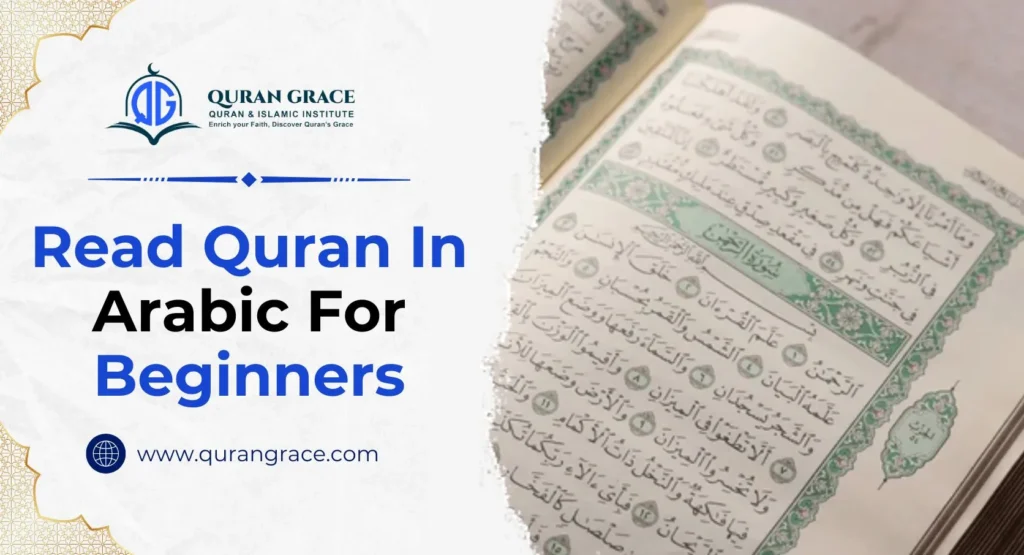In Tajweed, the rules governing Noon and Meem Mushaddad are essential to learn for proper Quran reading. The noon and meem mushaddad signifies the doubling of these letters, accompanied by a nasal sound (ghunnah) that lasts for two counts. For instance, in the case of Noon Mushaddad, exemplified by “إنّ” (Inna), and Meem Mushaddad, as seen in “أمّ” (Umma), the concept involves merging the silent letter with the moving letter, leading to an emphasized pronunciation that is crucial for accurate Quranic recitation.
Let’s learn these rules of doubling the letters with Quranic examples for practice.
Table of Contents
ToggleWhat Does Mushaddad Mean?
Shaddah is a distinctive diacritic mark in the Arabic script, elegantly placed above a letter to signify that the sound of that letter is to be stressed, doubled, or repeated. This mark, represented by the symbol (ّ), plays a crucial role in the phonetic structure of Arabic, influencing the way words are pronounced and understood.
The term “mushaddad” in Arabic translates to “strengthened,” “intensified,” or “reinforced,” encapsulating the essence of emphasis in the language. In Arabic grammar, this term often pertains to words or forms that have been augmented or enhanced for greater impact.
For example, in the formation of verbs, a root letter can be intensified through the process known as “tashdid” (تشديد), where one of the root letters is doubled. The resulting verb, now referred to as “mushaddad” (مشدّد), showcases this phonetic emphasis, thereby altering its meaning and nuance within a sentence. This interplay of letter emphasis is vital for conveying precise meanings in Arabic.
What Is Mushaddad letter?
A “mushaddad” letter refers to a letter that is doubled or repeated in pronunciation, which is represented in writing by a diacritical mark known as a shadda (ّ) placed above the letter. This notation signifies that the letter is to be pronounced as if it were two distinct letters, where the first letter remains silent while the second is articulated.
For instance, consider the Arabic word “مَدَّ” (mad-da), which includes the mushaddad letter “د.” In pronunciation, this word sounds like “مدْدَ,” where the first “د” is silent (saakin) and is followed by the pronounced “د.”
What Do Noon and Meem Mushaddad Mean?
The Noon and Meem Mushaddad are the most widespread rules of Tajweed. Noon Mushaddad and Meem Mushaddad, marked by a shaddah, indicate doubled pronunciation of the letters “ن” and “م” respectively, crucial for proper Tajweed and meaning in Quranic recitation. For example, “إنّ” emphasizes the “n” sound, and “أمّ” emphasizes the “m” sound.
1. Noon Mushaddad (نُون مُشَدَّدَة)
Noon Mushaddad (نُون مُشَدَّدَة) refers to the letter “ن” (noon) with a shaddah (ّ) mark. The shaddah indicates that the letter is doubled, or pronounced with greater emphasis. It means the “noon” is pronounced twice with a stress.
For instance, the word “إنّ” is pronounced with a focus on the “n” sound, much like “inn,” and contains a Noon Mushaddad. You will say the word and pause for 2 counts at noon to perform ghunna.
Noon Mushaddad examples:
- إِنَّا أَنْزَلْنَاهُ فِي لَيْلَةِ الْقَدْرِ
- إِنَّا أَعْطَيْنَاكَ الْكَوْثَرَ
- إِذْ قَالَ يُوسُفُ لِأَبِيهِ يَا أَبَتِ إِنِّي رَأَيْتُ أَحَدَ عَشَرَ كَوْكَبًا
2. Meem Mushaddad (مِيم مُشَدَّدَة)
Meem Mushaddad (مِيم مُشَدَّدَة) refers to the letter “م” (Meem). Similar to noon, the meem is also stressed on because of being 2 in numbers.
For instance, the word “أمّ” is pronounced with a focus on the “m” sound, such as (umm), and contains a Meem Mushaddad. Here, you will pause for 2 counts to perform ghunnah.
Meem Mushaddad Examples
- رَبَّنَا وَلَا تُحَمِّلْنَا مَا لَا طَاقَةَ لَنَا بِهِ ۖ
- وَٱمۡرَأَتُهُۥ حَمَّالَةَ ٱلۡحَطَبِ
- عَمَّ يَتَسَآءَلُونَ
The Rules of Noon and Meem Mushaddad
When a shaddah appears on a meem or noon, the Tajweed rule for Noon and Meem Mushaddad is to pronounce it with a ghunnah (nasal sound) lasting two counts (2 haraka). A nasal sound is produced by intensifying the pronunciation of the saakin letter by combining it with the moving letter.
The rule for Meem Mushaddad is Idgham (Merging), which is the merging of the saakin Meem into the moving Meem, creating a single intensified Meem that is pronounced with a ghunnah.
How to learn Noon and Meem Mushaddad?
If you are a beginner and want to learn these essential tajweed rules, the best option is to join an online tajweed course at Quran Grace where you get a free consultation regarding the choice of rules you want to learn and then take a free trial to see how the rules are explained online with Quranic examples. Enroll with a customized learning plan and learn the rules of Noon mushaddad and meem mushaddad efficiently.
Secondly, you can learn the rules of Tashdeed by practicing the Quran recitation on your own. Either imitate a Qari or read the verses after your teacher. Underline or highlight the noon and meem with shaddah on the page which you intend to recite. Then, focus on this rule and become proficient.
Conclusion
Among the rules of Tajweed, noon and meem mushaddad are easy and simple to learn. Get proficient immediately by carefully practicing the rule. Taking an advanced tajweed course and following a step-by-step method can help you learn all the rules of Tajweed effectively.








